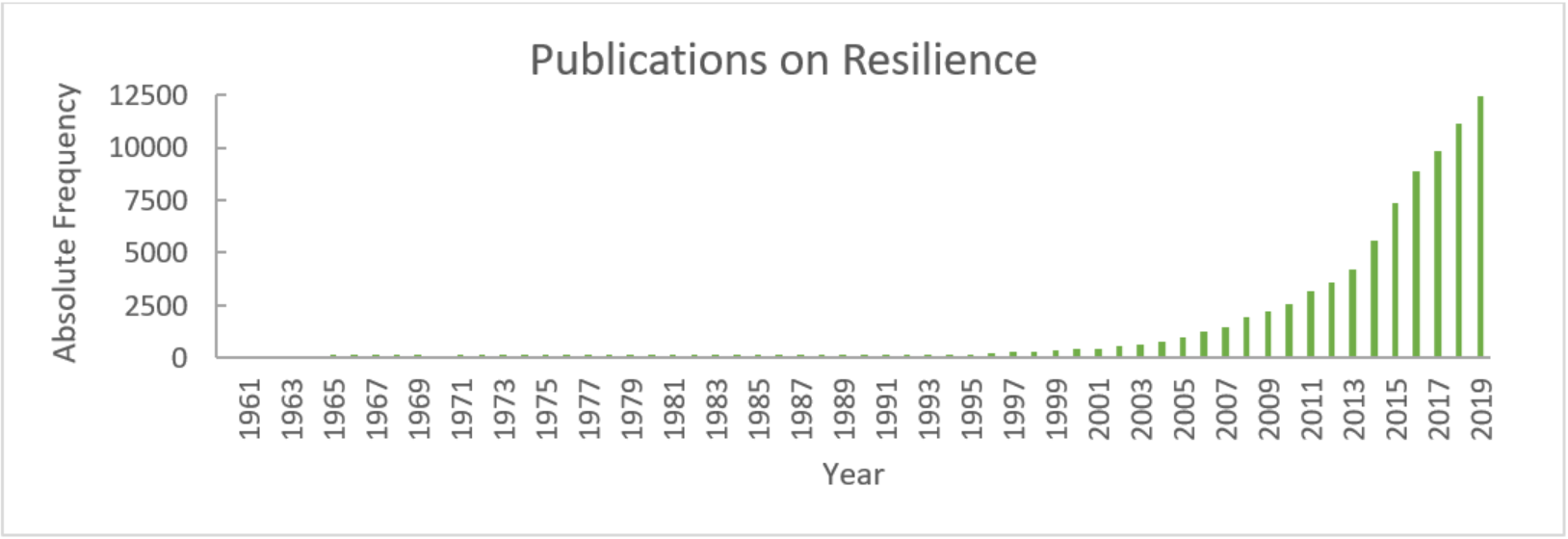The concept of resilience has boomed in recent years, especially in academic publications. A Web of Science search for the topic yields more than 82 000 publications, 60% of which have been published since 2015. Figure 1 shows the frequency of resilience publications over time.
Figure 1: Absolute frequency of publications on resilience since 1960 (Web of Science, 2020)
Resilience, as a concept, has been criticised for its ambiguity and misuse, possibly diverting attention from the actual problems. Indeed, the term is used in various disciplines including material science, engineering, development, environmental sciences and psychology, all using their own definitions (review: Thorén, 2014). The Web of Science search confirms this and indicates a high usage in environmental sciences, as shown in figure 2.
Figure 2: Web of Science categories, total number of records 82,609 (Web of Science, 2020)
Given the wide range of applications, resilience of what is the question that needs a precise answer. As we consider food security, systemic resilience is what we are interested in. Systemic resilience originated in ecology and was initially defined by C.S. Holling in 1973 in terms of the nature of stability of ecological systems. It explains a dynamic ability of systems to persist in a functional way, for example how trees can continue to live in spite of harsh weather.
Measuring the resilience of a system requires a decision on its function
The fact that we need to decide on a function in order to discuss a system’s resilience, is important because it implies that resilience is a normative term. The same system can be totally resilient with respect to one function while being totally unresilient with respect to another function. The normative nature of the term makes it prone to be called ambiguous, although we actually only need a clear statement about the function assumed.
A second central realisation is that we are, strictly speaking, indifferent about the form of the system, as long as it continues to provide its defined function. Systemic resilience hence is not equal to static stability of the system. In contrast, Béné et al. (2014) select absorptive, adaptive and transformative capacity as attributes of a system to be considered resilient. This means that a system is resilient, even if it changes its form in order to sustain the function.



